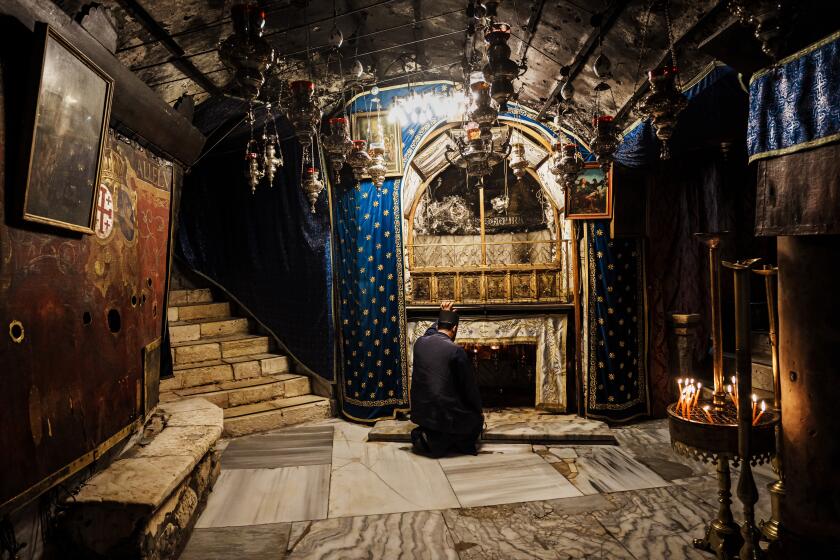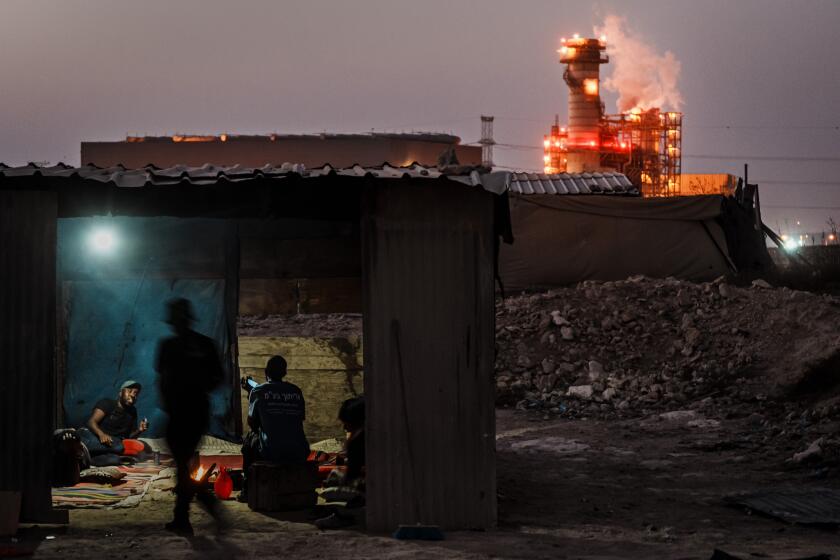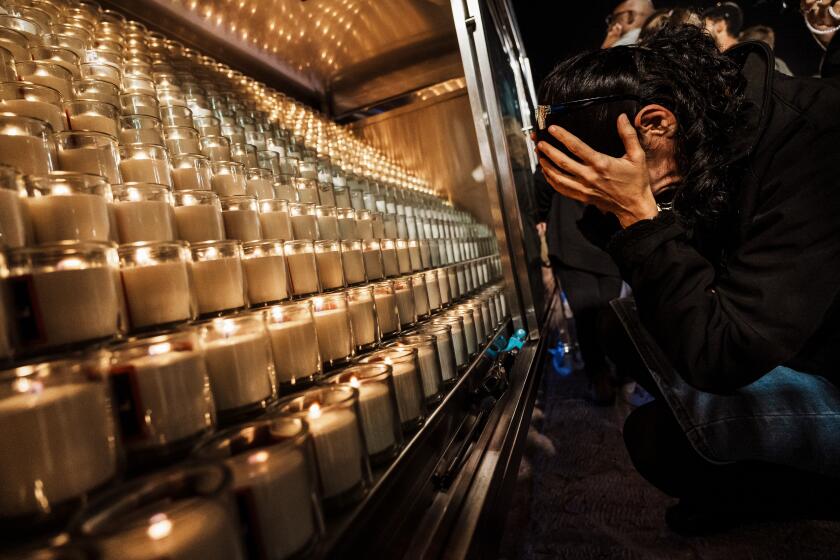In war-stricken Gaza, hunger is a constant companion
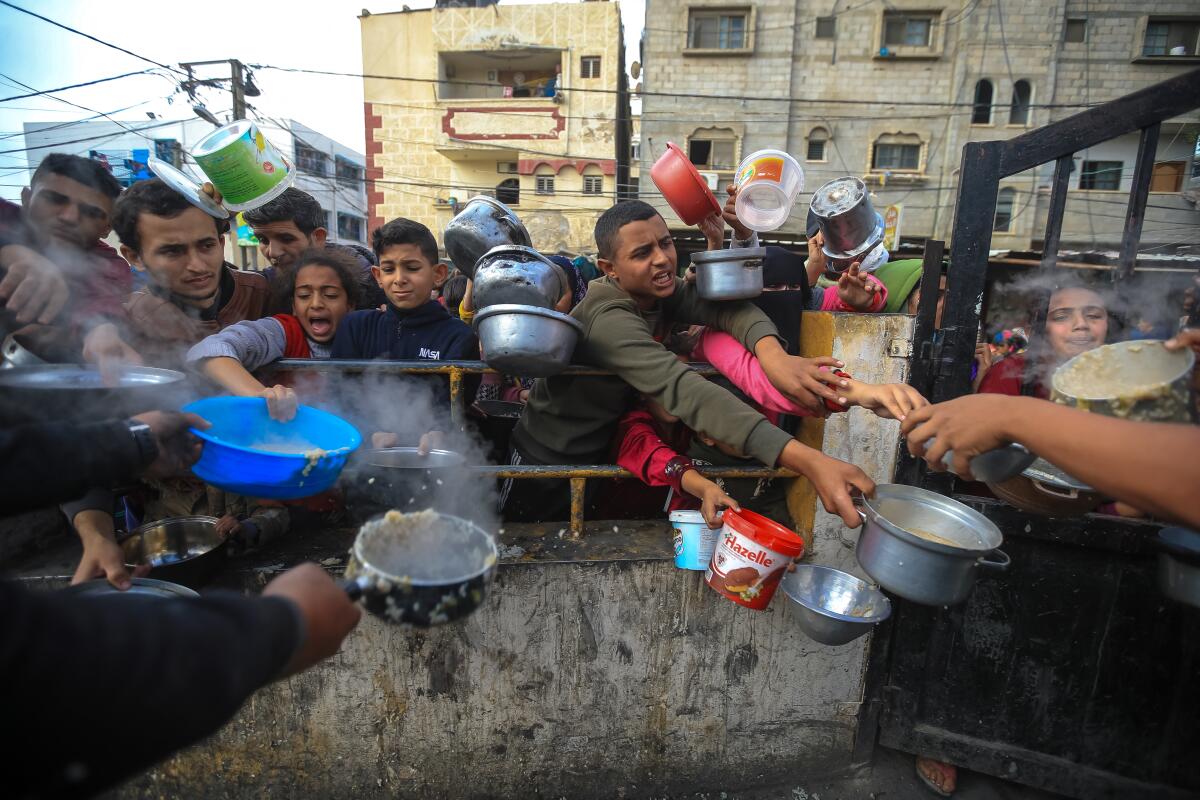
- Share via
DEIR AL BALAH, Gaza Strip — In wartime Gaza, death can come quickly or slowly. Starvation is slow.
With the war between Israel and the Palestinian militant group Hamas now in its 12th week, more than 20,000 deaths, about a third of them children, have been reported by Palestinian authorities in the Gaza Strip.
The great majority of fatalities have been the result of Israeli bombardment, officials say. But hunger’s grip is tightening by the day.
The United Nations and other agencies last week raised the alarm over “acute food insecurity” in the blockaded enclave, saying 1 in every 4 households were facing extreme hunger.
A 42-year-old Palestinian father, Mustafa Shandojli, described a recent meal for his family of seven, displaced from Gaza’s Jabaliya refugee camp: He was lucky enough to find and purchase a bit of livestock feed.
Paths for ‘unhindered’ aid to Gaza were approved in a rare U.S. abstention at the U.N., but there is still no agreement on a cease-fire.
“What was bought was grain intended to be given to animals,” he said. “We pounded it with stones and cooked it.”
In ever-shrinking zones of Gaza where people have sought haven from bombardment — sometimes moving to an area that has been designated as safe, only to come under fire again — the unrelenting struggle to find food is beginning to outweigh all other imperatives.
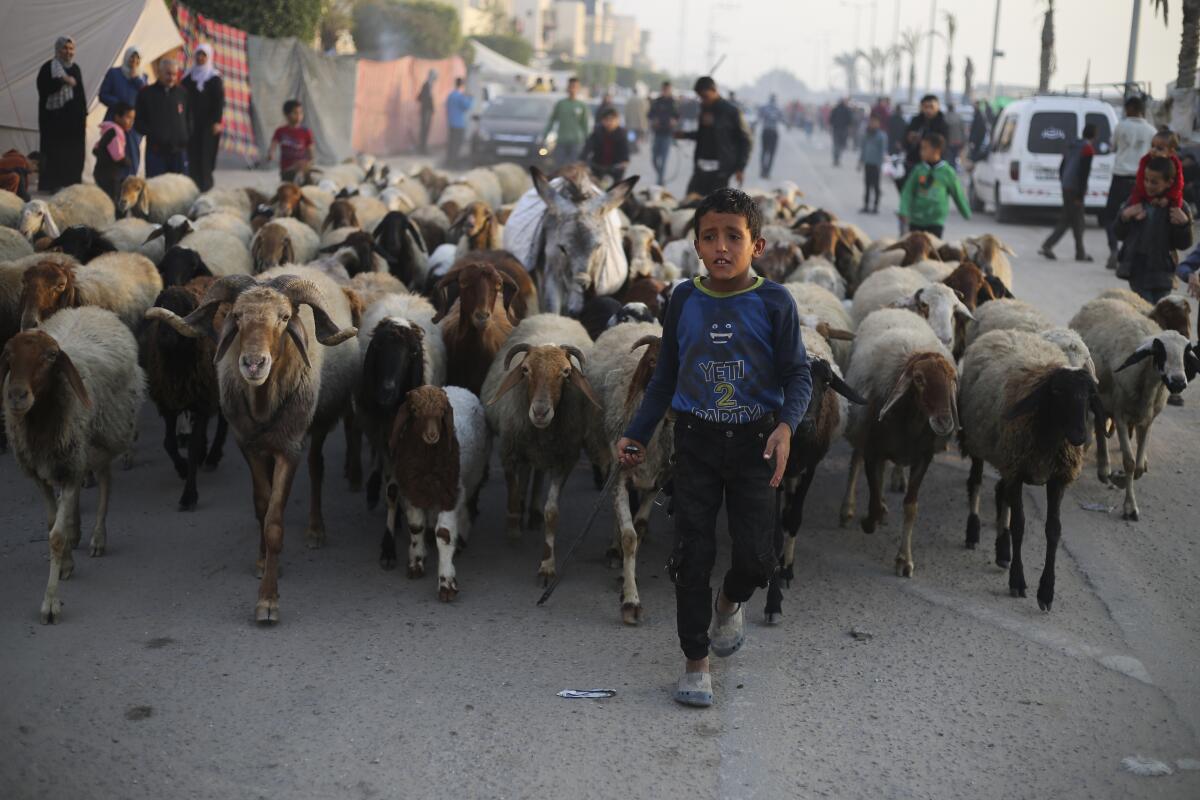
The Dec. 21 report by the U.N. and several food security agencies said the situation was most dire in Gaza’s south, where many arrived after heeding Israeli military orders to flee their homes in the north. But people all over the narrow coastal strip were routinely without food for a day or more at a time, the report said.
“Four out of 5 of the hungriest people anywhere in the world are in Gaza,” U.N. Secretary-General António Guterres told reporters last week.
The world body’s hunger-monitoring system, known as the Integrated Food Security Phase Classification, said that by the first week in February, Gaza’s entire population could be at “crisis or worse” levels of hunger — a designation it called unprecedented.
“This is the highest share of people facing high levels of acute food insecurity that the IPC initiative has ever classified for any given area or country,” the report said.
In Bethlehem, the West Bank town revered as Jesus’ birthplace, Christmas is all but canceled, in solidarity with Palestinians’ suffering in Gaza.
When the war began after Hamas’ Oct. 7 devastating cross-border strike into southern Israel — where its fighters and followers killed about 1,200 people, according to Israeli authorities — ordinary Gazans realized immediately there would be harsh retribution.
Many people had stockpiled emergency supplies at home, or maintained small gardens they thought would sustain them for a time, or rushed to markets as the news spread, hoping to ride out whatever was to come.
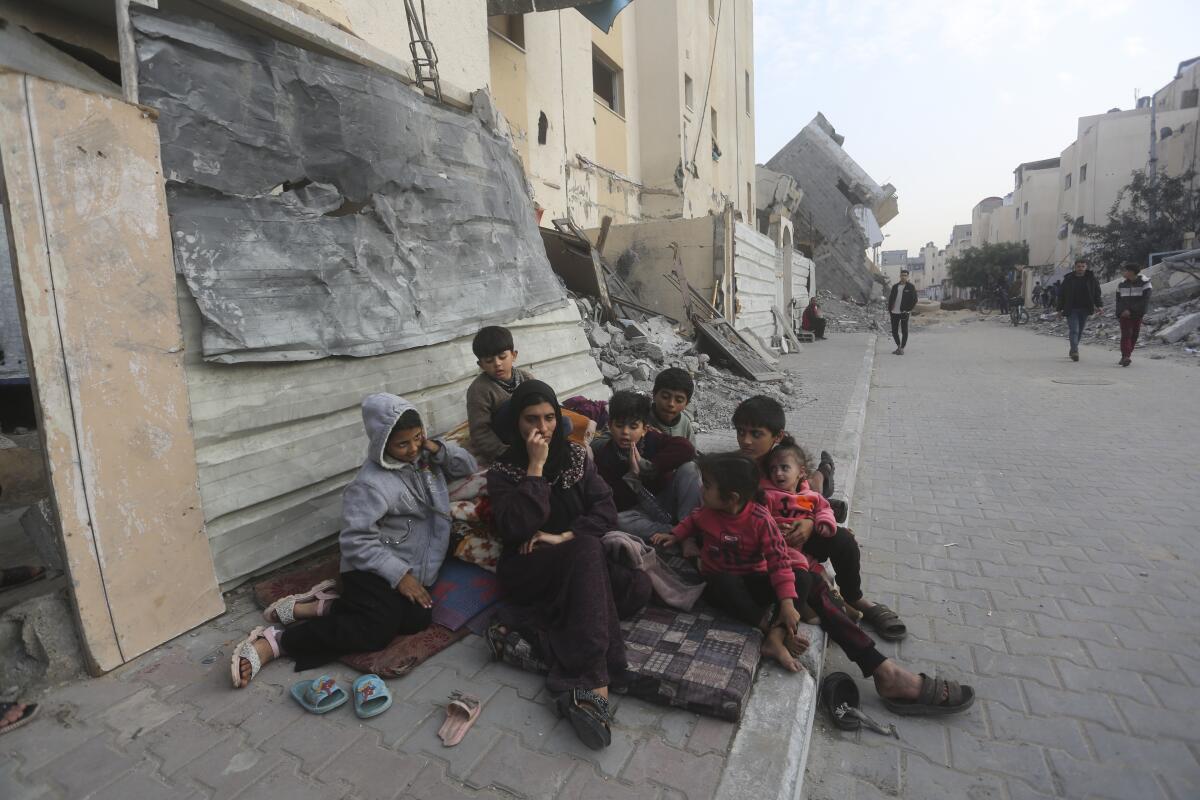
Few, though, foresaw the vast scale of displacement. The war has driven about 80% of Gaza’s inhabitants from their homes, according to the U.N. Many who fled on foot from ruined districts — or were warned by Israel to leave before the bombing began — were forced to abandon their homes with only what meager possessions and provisions they could carry.
“I saw people selling one onion, or two tomatoes, or something that looks like the last thing that they carried before they were displaced,” said Tamara Alrifai, a spokesperson for the U.N. Relief and Works Agency, who visited Gaza this month. “People are really desperate, really hungry, and mostly, really scared.”
Alrifai told CNN that even people who had managed to hoard some cash found there was “nothing to buy” in markets or half-ruined shops.
One Palestinian doctor working for the agency, Alrifai said, had set up a schedule of “Ramadan-style” fasting for her household — even though it is not the Muslim holy month, when people refrain from eating during daylight hours — because she could procure only enough food for one meal a day.
Bedouins of the Negev desert face rockets from Gaza and discrimination and arrest by Israel. They seek safety as the war energizes the far right.
Hunger is part of a larger matrix of suffering that also includes widespread disease, lack of adequate shelter, overcrowding and a lack of clean drinking water. Malnutrition heightens vulnerability to disease, the World Health Organization pointed out in a recent report.
Adding to the misery, the rainy season has set in, flooding already sodden tent camps where many live.
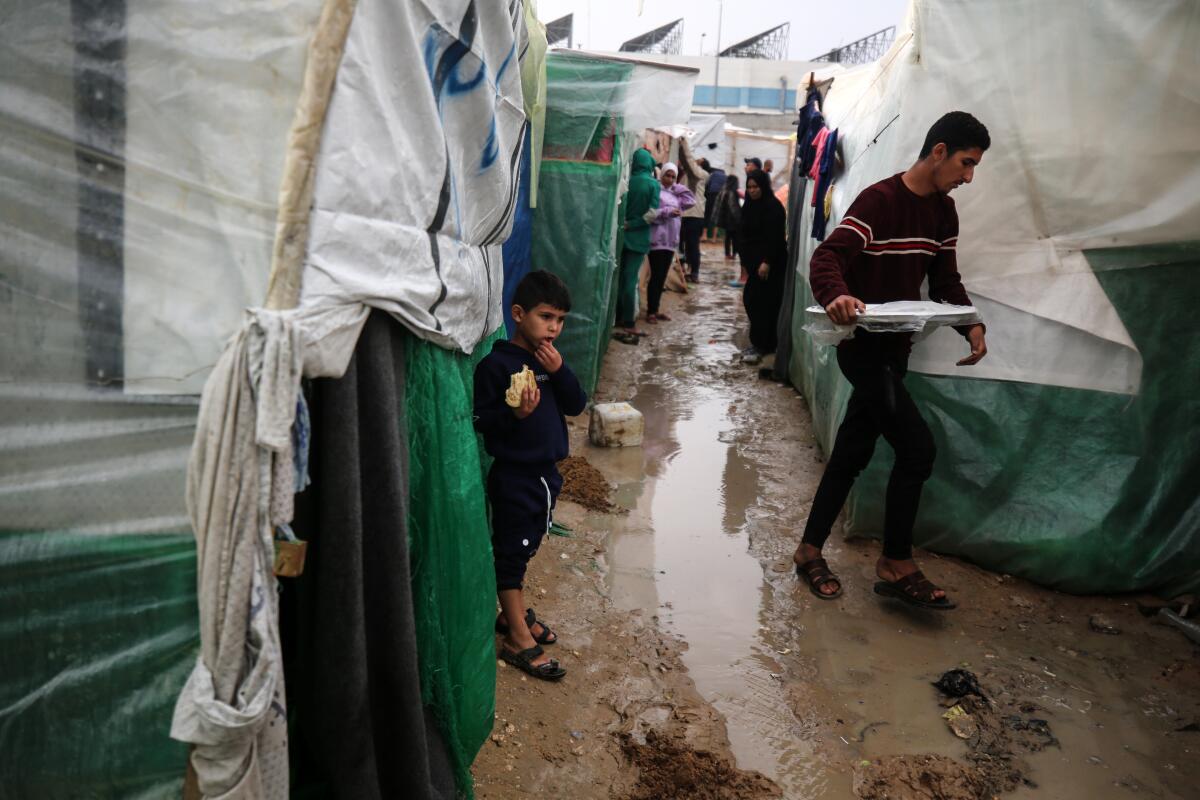
Sahar Kamel Samouni, a 33-year-old mother of five displaced from Gaza City, was despairing: Even when food could be found, the drinking water was dirty and the children came down with diarrhea.
“Sometimes we have had no choice but to drink water filled with salt,” she said.
A Security Council resolution last week called for urgent steps to assure “unhindered” delivery of humanitarian assistance to Gaza. The United States abstained from voting on the measure, which was the subject of days of negotiations — but did not veto it, as it has done with previous resolutions that call for at least a pause in the fighting.
On Tuesday, under the resolution’s terms, the U.N. announced the appointment of Dutch politician Sigrid Kaag, a veteran diplomat, to take charge of the relief effort.
‘Who will we be when we rise from the ashes and reenter our lives?’ Israeli novelists, filmmakers and TV writers are wondering how to tell the story of the Oct. 7 attacks and the war that followed
Israel and the United Nations have traded blame over the bottleneck of crucial supplies at Gaza’s borders. Aid agencies have blamed cumbersome Israeli inspection procedures, but the Israeli government says it has inspected three times as much aid as has entered Gaza.
Israel also periodically accuses Hamas of siphoning off what supplies do get through. Some lawlessness is fueled by desperation, with videos circulating that show people surrounding aid convoys, grabbing supplies and eating whatever food there is to be found on the spot.
Others report surviving on the charity of even those who are hungry as well.
“There is nothing to eat,” said 60-year-old Safia Abu Obaid, sheltering with about 20 family members, including children, on the grounds of the only medical facility in central Gaza, the barely functioning Al Aqsa Martyrs Hospital.
Abu Obaid said others living in the cramped corridors of the hospital would sometimes offer up a bit of precious flour or a few hunks of bread.
“This is how we live,” she said.
The Times special correspondent in Gaza, who cannot be named for security reasons, reported from Deir al Balah. Times staff writer Laura King contributed to this report from Jerusalem.
More to Read
Sign up for Essential California
The most important California stories and recommendations in your inbox every morning.
You may occasionally receive promotional content from the Los Angeles Times.

